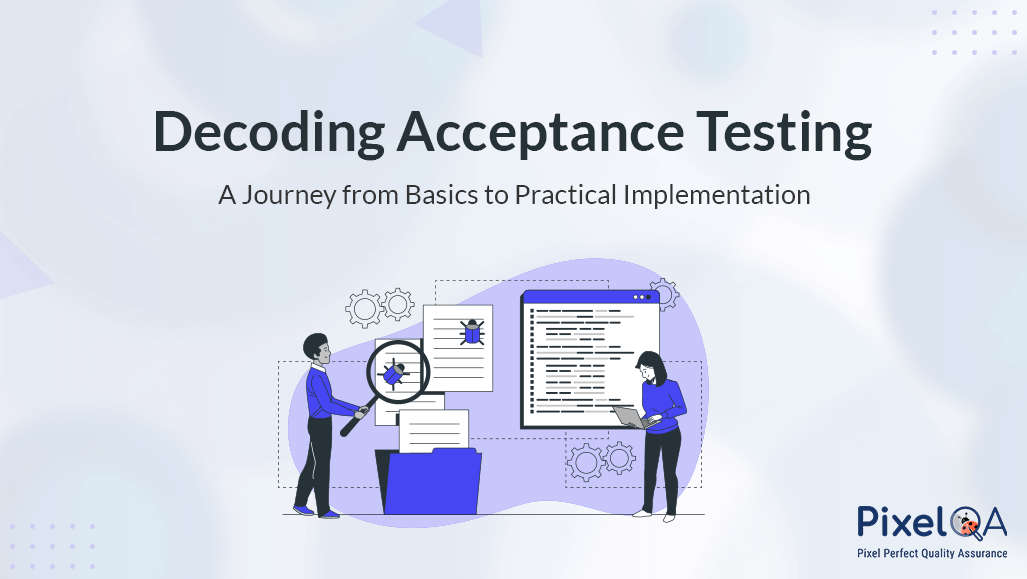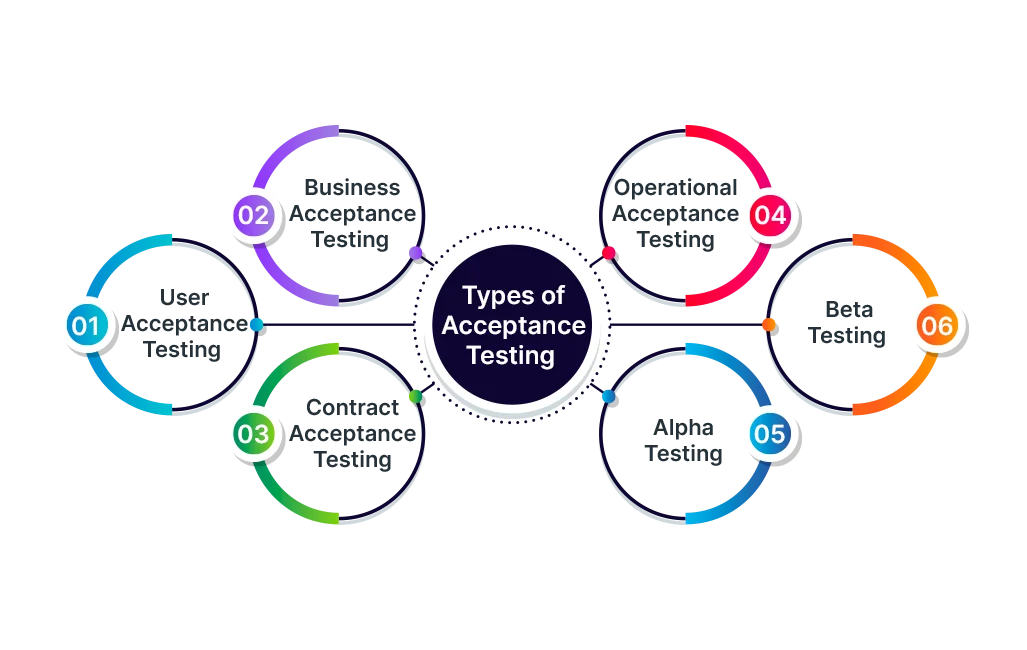
Acceptance testing is a vital stage in software development, coming at the end of a long development process. It plays a crucial role in ensuring the software operates smoothly and meets both the end-user's high expectations and broader business goals. When combined with System Testing Services, it forms a comprehensive validation approach that strengthens software quality and reliability before final deployment.
Acceptance testing has many advantages, from ensuring that systems fulfill requirements to identifying flaws in the system before it is deployed, which increases productivity and reduces expenses. Acceptance testing comes in a wide variety of forms with distinct goals at different phases of development.
Table of Contents
- What is Acceptance Testing
- Importance of Acceptance Testing
- Type of Acceptance Testing
- User Acceptance Testing
- Business Acceptance Testing
- Contract Acceptance Testing (CAT)
- Operational Acceptance Testing
- Alpha Testing
- Beta Testing
- Quick Steps to Perform Acceptance Testing
- Conclusion
What is Acceptance Testing
Acceptance testing is a process of verifying that software meets the expectations of users. It is typically performed by end users, in an environment like production, to determine if the software works as expected.
In simple words, after System Testing and before making the system accessible for real use, Acceptance Testing is the final phase of software testing.
Importance of Acceptance Testing
The importance of acceptance testing is immense, and if the testing team skips the acceptance test, there are chances that the software may not align with the initial requirements. Once the system testing is completed successfully in the SDLC, testers must conduct an acceptance test:
- To ensure the software works in the desired manner.
- To confirm the software matches current market standards and competes with similar products in the industry.
- To gain confidence in the software that is getting pushed into production.
- There are multiple types of acceptance testing involved that can confirm your product aligns with the initial specifications.
- Reduce the number of defects in software.
- Find out if there are any bugs in the software before releasing it.
- Determine whether a product is ready for real-world usage and if the new functionality truly dissolves with existing functionalities.
- Act as a safety check, preventing glitches from reaching the end-user’s experience.
Type of Acceptance Testing

User Acceptance Testing
User Acceptance Testing is an essential stage in the testing cycle that ensures your product meets user expectations. User acceptance testing will help you to determine if your product has a positive impact on the end users and whether it is likely to have any negative effects. It's a good idea to test the usability of your application with real users before you ship it out.
Business Acceptance Testing
BAT is focused on ensuring that the software meets the business goals and purposes. In the case of UAT, for example, during actual usage, when the end-user discovers the bugs, the project suddenly slows down, costs rise, and timeframes for the end customer are impacted.
Contract Acceptance Testing (CAT)
CAT is a contract that states that once the product goes live, the acceptance test must be performed within a certain time and must pass all acceptance use cases. A service level agreement (SLA) specifies that payment will be made only if the products or services meet all requirements, indicating that the contract has been fulfilled. This contract is sometimes signed before the product is released.
Operational Acceptance Testing
Operational Acceptance Testing refers to the process that a company uses to make sure that all features work properly after an upgrade or patch has been installed and the system is running correctly before releasing it to users. This is different from unit testing which focuses on individual software components and code, such as unit tests and integration tests, respectively.
Alpha Testing
Alpha testing is a process where you provide feedback to your client on the features of the product before it is officially launched. This allows your client to correct any problems before they are released in production.
Beta Testing
It is used to evaluate a product by exposing it to real end-users, commonly referred to as beta testers in their environment. Users’ feedback is gathered, and flaws are addressed. Beta testing also aids in enhancing the product to provide a rich user experience.
Quick Steps to Perform Acceptance Testing

Requirement Analysis
During this phase, the testing team first analyzes the requirement document and then determines the objectives of the developed software based on these requirements.
Create a Test Plan
Test planning outlines the entire acceptance testing strategy. This strategy ensures and verifies whether the software meets the specified requirements. It catalogs the test strategy, objectives, schedule, estimations, deadlines, and resources required for successful project completion.
Test Case Design
During this phase, test cases are designed to cover most scenarios based on the test plan document. So, create detailed test cases based on the identified requirements and acceptance criteria. These test cases define specific steps, input data, and expected outcomes for validating the software’s behavior and functionalities against the defined criteria.
Test Case Execution
All acceptance test cases are implemented with the input values during this phase. The tester collects and executes all user input values to ensure that the software works properly in scenarios.
Confirmation of Objectives
The QA team, at this stage, confirms that the software has no defects or bugs and is ready for delivery to the client.
Conclusion
Testing acceptance is very important really in the software development process; therefore, you must devote time for it properly. You can guarantee that your product or service was as good or better than it hit the market expectations of your users and lived free from dead bugs in its lifetime.
This article, as well as demystifying acceptance testing, offers practical guidance such that readers will know what tools to equip themselves with to apply effective testing strategies in their projects. As we wind this journey, one thing is sure; there is no way to make it out without acceptance testing when it comes to delivering a high-quality application for end-users and a successful place in today's competitive landscape.
So, are you ready to implement effective acceptance testing strategies in your projects? Let our expertise guide you towards software excellence. Hire cutting-edge testing services from a top-notch software testing company and ensure your applications shine with quality and performance
About Author
 Komal Chaudhari is a dedicated QA Executive at PixelQA, bringing her passion for software quality to every project. Starting her IT journey in 2022, she's steadily progressed by deepening her understanding of QA processes and refining her technical skills.
Komal Chaudhari is a dedicated QA Executive at PixelQA, bringing her passion for software quality to every project. Starting her IT journey in 2022, she's steadily progressed by deepening her understanding of QA processes and refining her technical skills.
Her future goal is to excel in test automation tools, and staying abreast of technological advancements in QA. With her commitment and drive, Komal is set to make impactful contributions to the software development industry.


